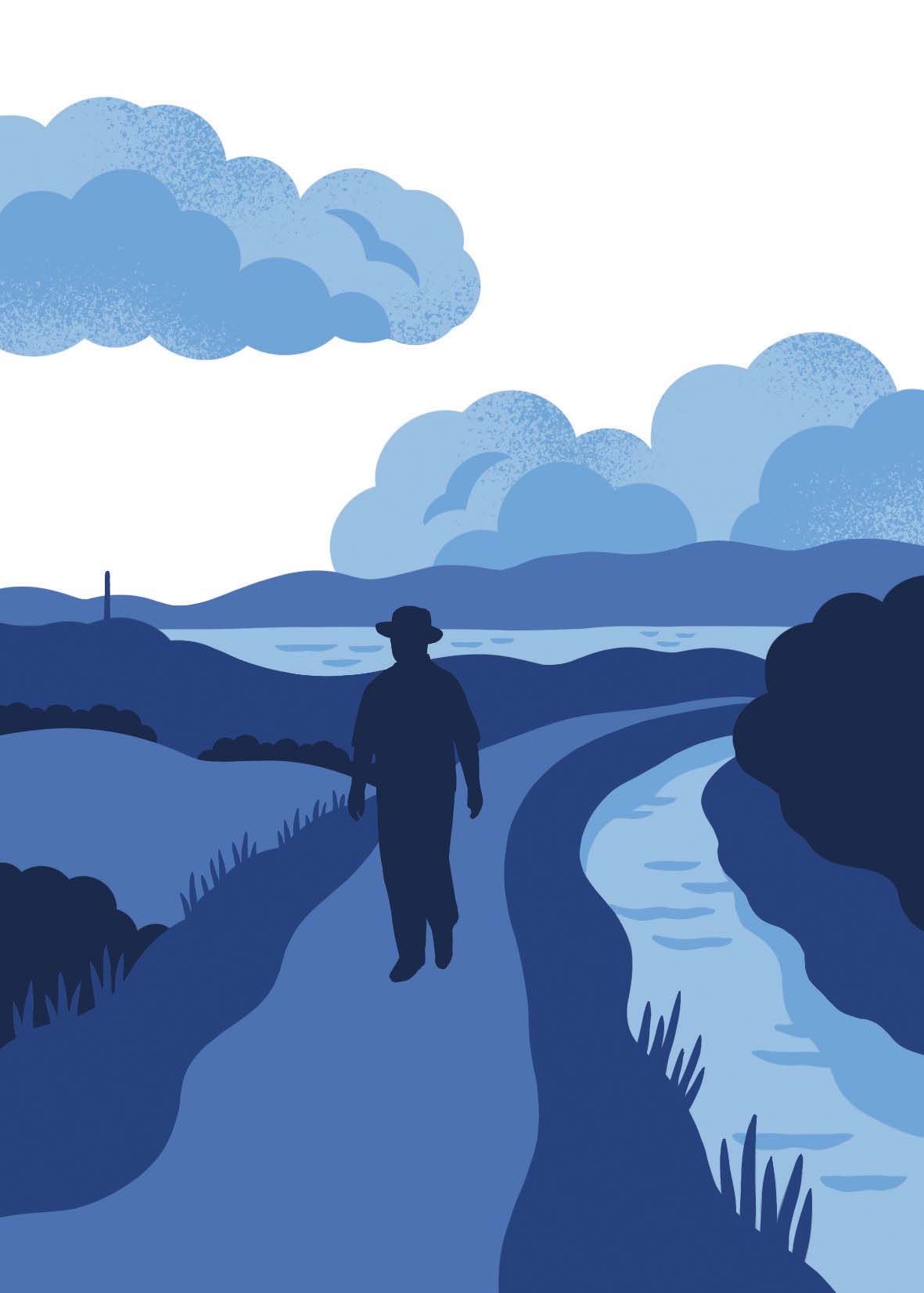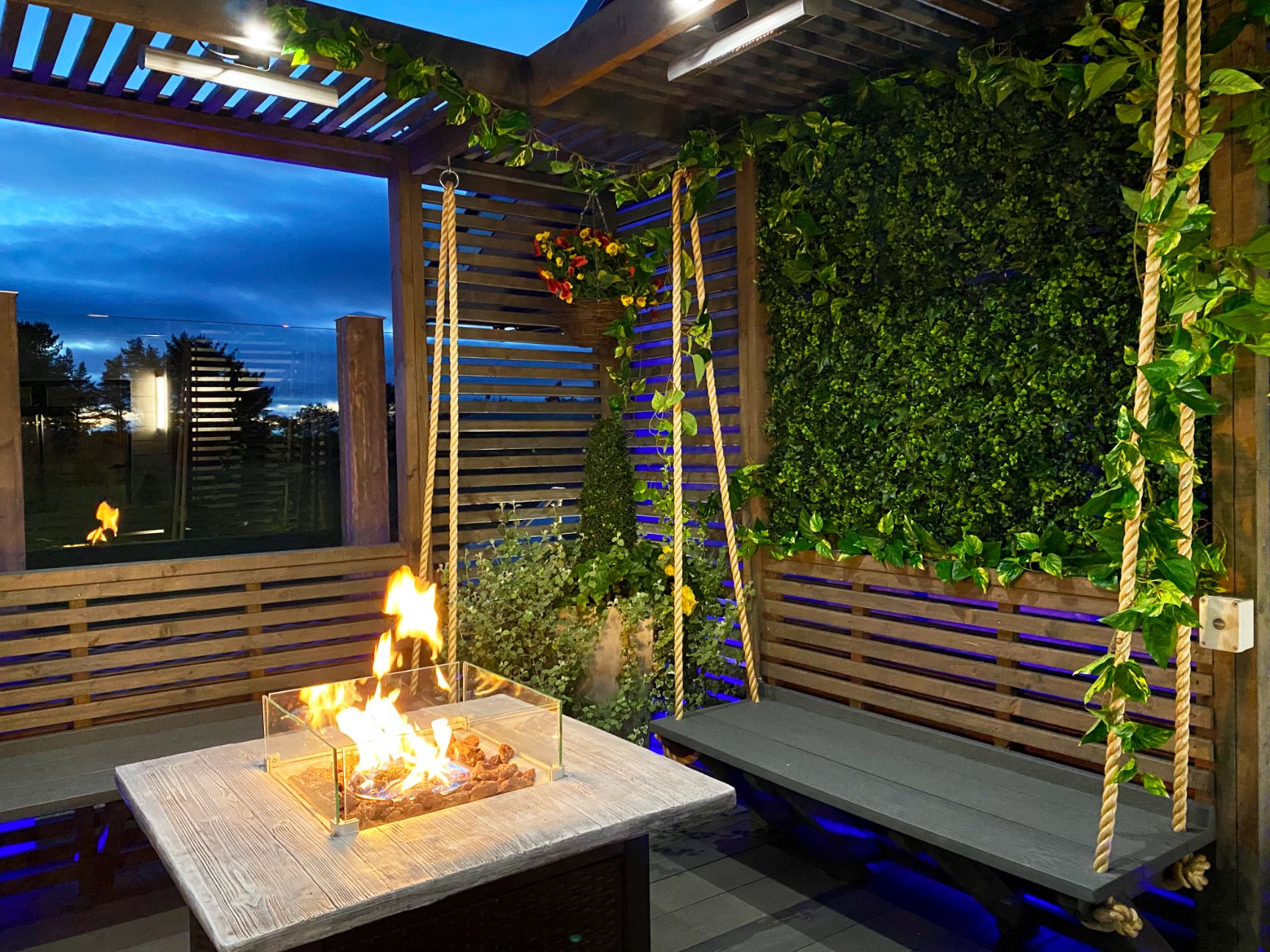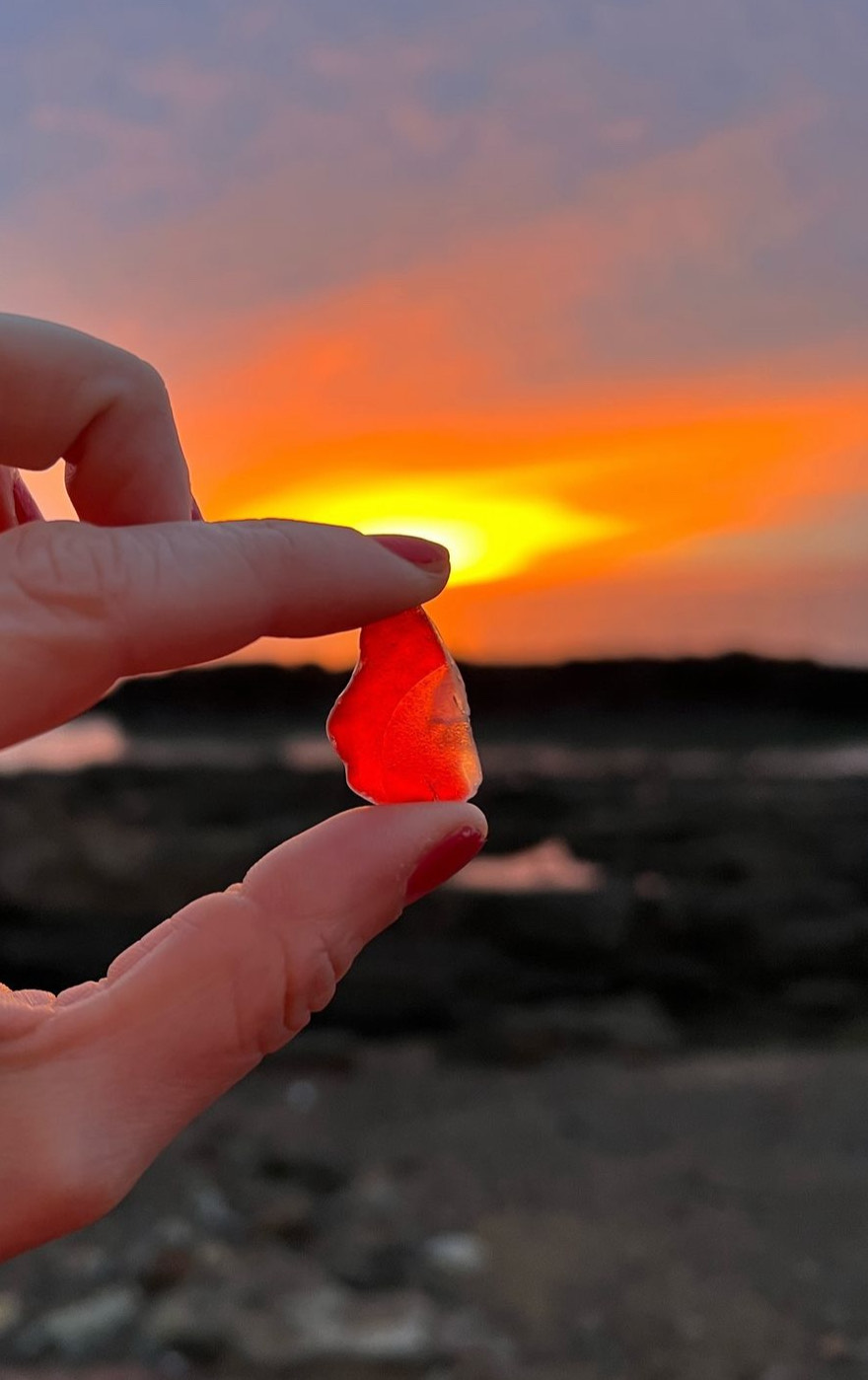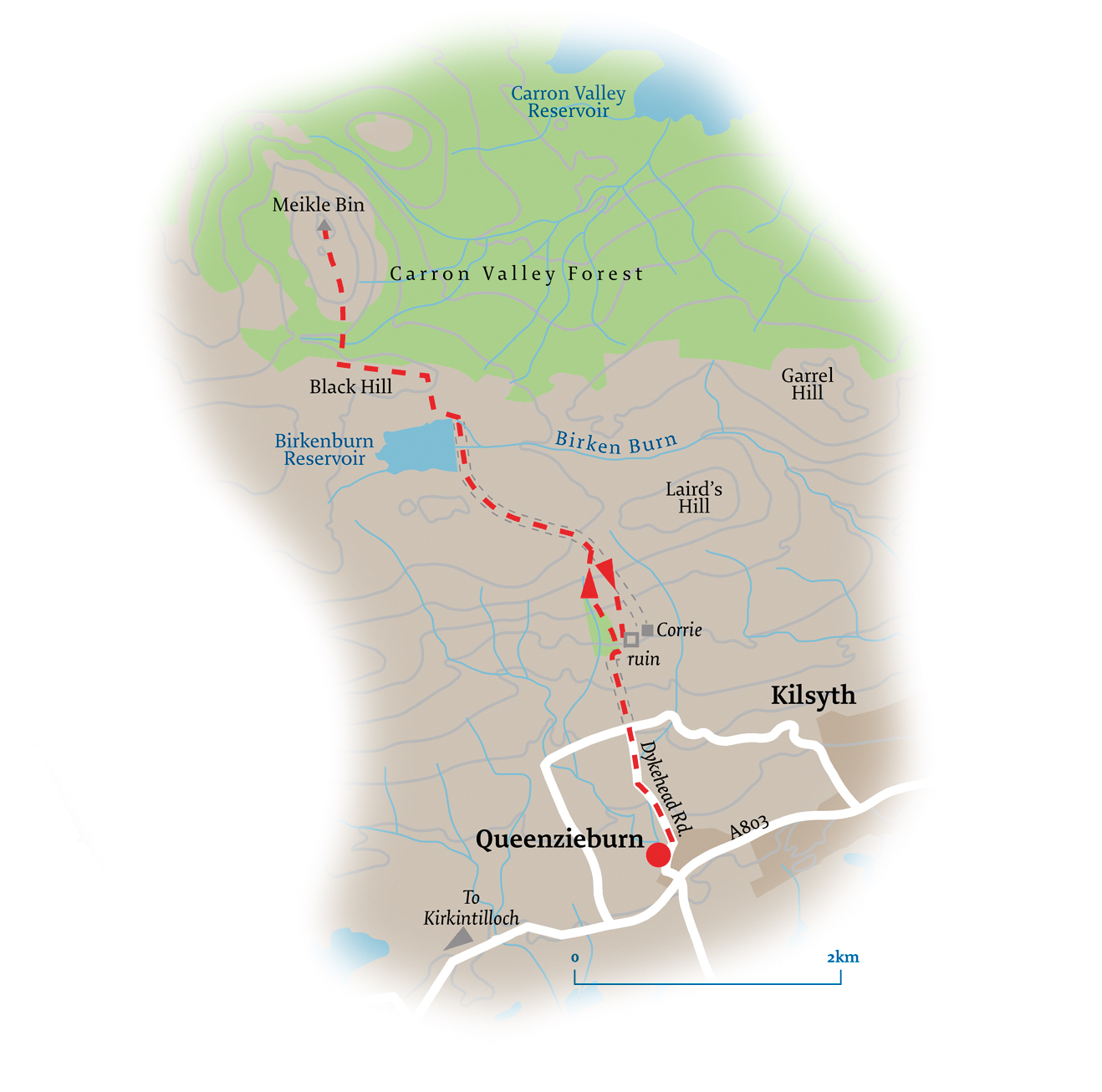This edition, we follow Pocket Mountain guide to Greenock Cut.
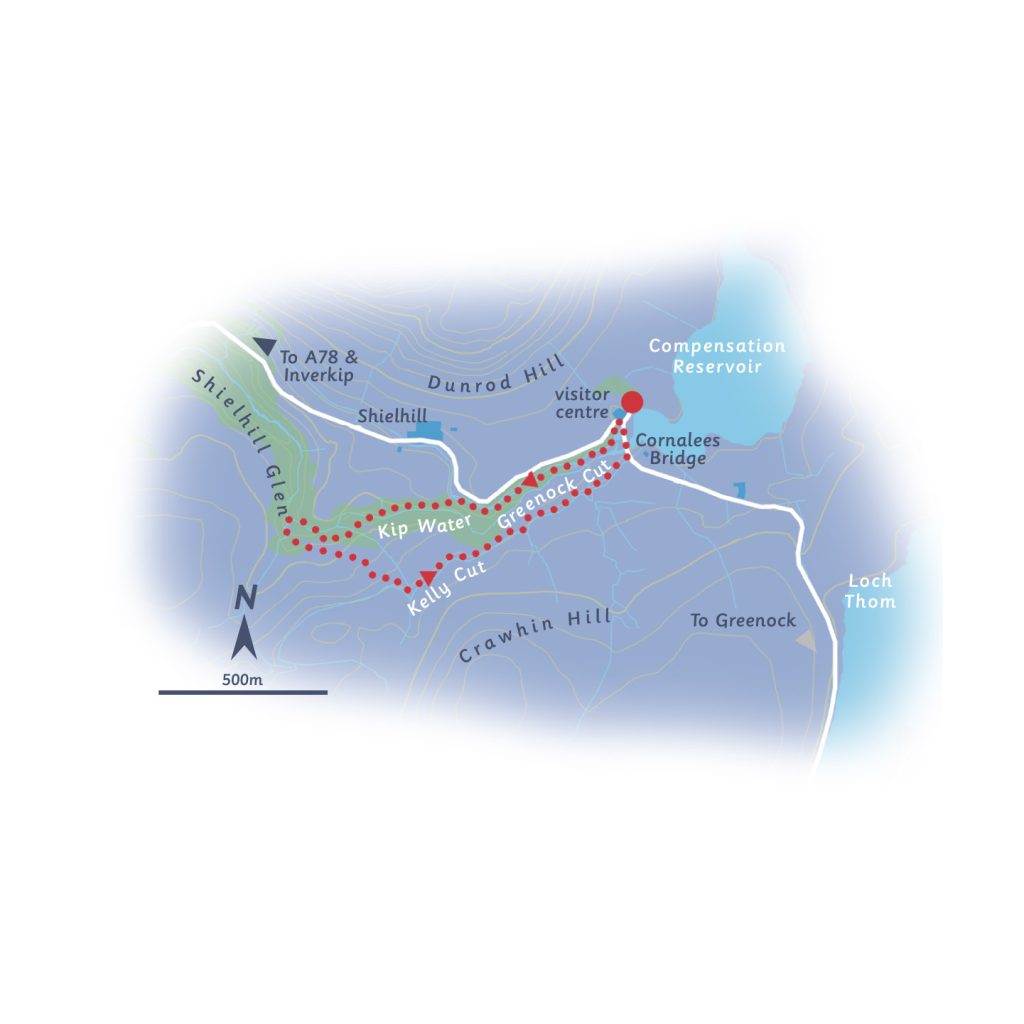
Distance 2.5km Time 1 hour 15
Terrain surfaced and unsurfaced paths, steps Map OS Explorer 341
Access regular buses to Inverkip (4.5km to start of walk) from Glasgow, Greenock and Largs
The Greenock Cut is a 6.5km aqueduct built along with the Great Reservoir (now Loch Thom) and Compensation Reservoir in the 1820s, powering the paper, cotton, woollen, sugar-refining and shipbuilding industries to which the town of Greenock owed its wealth.
From its inception, the Cut also offered well-attired Georgians an elevated promenade from which they could survey this busy stretch of the Firth of Clyde as steamboats plied the waters from Greenock’s quay to ports up and down the west coast. Today its towpath character, intersected by a score of small stone bridges, makes the Cut a less formal but no less striking vantage point over the river and the Clyde Muirshiel Regional Park.
Starting from the Greenock Cut Visitor Centre, head right on the road and go down a path which begins to the right of a bridge. Pass a stone monument to Robert Thom, cottonmill owner and engineer, who designed this innovative ‘green’ power scheme in the 1820s and after whom the main reservoir is named. Half a century earlier, James Watt, arguably Greenock’s most famous son, had overseen a project to improve the water supply to the town from two small reservoirs on Whinhill but by the 1820s this was inadequate.
Drop down to the start of the Greenock Cut. The 15 months of labour to dig out this trench on the edge of the moor would have been back-breaking, with little opportunity for labourers to enjoy the view to the isles in the Firth of Clyde. The Cut was used until 1971, with the workers who were employed to break the surface ice in winter housed in basic bothies.
Cross a bridge over a sluice gate and turn right (if you are lucky water will be cascading out of Compensation Reservoir into Kip Water, to the left). The path continues between the Cut
to the right and the burn down below. After passing through a metal gate take a path on the left, away from the Cut and down steps.
Once through a wooden gate the path descends and you can try to spot the 12 ‘Wood Spirits’, carved wooden faces positioned among the trees by the ranger service. The woodland is home to native hazel, rowan, oak, ash and willow, and resonates to the sound of birdsong, especially during the breeding and fledging frenzy of spring and summer.
When you reach the burn, take the path over a series of small bridges before duckboards lead you along the opposite bank of the usually roaring water. After a gate the boards steer you left to climb steadily to a path, where you turn left and follow a ditch. This is the Kelly Cut, built in 1845, with views down the glen through which the Kip Water makes its
brief journey to the Firth of Clyde.
In sunshine, dragonflies dart above the water, in spring you may spot cuckoos and skylarks on the moor and, if you are lucky, a hen harrier may even pass overhead.
At a minor road go left to pass the end of Compensation Reservoir and return to the visitor centre.
Pocket Mountain guide to Greenock Cut –
Pocket Mountain publish accessible and inspiring pocket-sized guidebooks for anyone who likes a bit of an adventure.
Return to Articles


